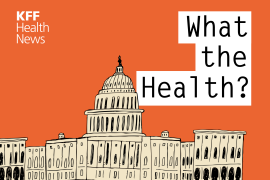ADAPs Serving More Patients, But Enrollment Caps, Budget Shortfalls Exist, Survey Finds
Increases in enrollment into and expenditures by federally funded state-administered AIDS Drug Assistance Programs may leave some states with a budget shortfall for their programs this year, a new survey conducted by the National Alliance of State and Territorial AIDS Directors and the AIDS Treatment Data Network for the Kaiser Family Foundation shows. Findings from the "National ADAP Monitoring Project Annual Report" are listed below:- Since 1996, the number of people served by ADAPs has more than doubled due to a number of factors, including increases in the number of people with HIV/AIDS, the availability of "more effective" treatments and increases in federal and state funding.
- The national ADAP budget for FY 2000 was $724.5 million, $128.8 million of which came from individual states. The national ADAP budget increased by 9% and state contributions by 3% from FY 1999.
- State contributions to the program vary. Although 37 out of 51 jurisdictions reported allocating funds to their programs, 14 relied solely on federal funding. Also, some states provide "significant" funding, but others contribute "little or none at all." In addition, income eligibility levels for participants "var[y] greatly across states."
- Antiretroviral drug costs account for 87% of ADAP expenses. ADAPs spent $51.3 million an AIDS medicines in FY 2000, a 23% increase from the $41.3 million spent in FY 1999. Every ADAP except one covers all FDA-approved antiretroviral drugs, and five states have "capped or restricted access" to the medicines.
- Ten states say they will "exhaust" their ADAP operating funds before the end of the program's fiscal year on March 31, 2001. These shortfalls have led some states to implement program restrictions such as lowering financial eligibility criteria, limiting the number or types of drugs covered by the program and imposing caps on enrollment.
- More than 80% of ADAP clients in 2000 had incomes at or below 200% of the federal poverty level, with almost half of all clients earning at or below the FPL. Only 10% of ADAP participants had private insurance with "some level" of prescription drug coverage.
More Spending Needed
Health officials said that increasing enrollment and expenditures will require greater funding for ADAPs on the state and federal level. Arnold Doyle, director of HIV treatment programs for NASTAD, said, "Intensified efforts at the national level to encourage more people -- especially hard-hit populations like African Americans and Latinos -- to be tested for HIV and linked to care services will undoubtedly increase the burden on ADAPs and other Ryan White CARE Act-funded programs. These increases will require a continued and expanded commitment of federal and state resources to ADAPs if all ADAP-eligible individuals are to receive the basic, recommended standard of HIV treatment." Drew Altman, president and CEO of the Kaiser Family Foundation, added, "ADAP programs continue to fill the gaps for many people with HIV who don't have access to high cost prescription drugs and aren't eligible for Medicaid. The challenge facing the federal government and the states today is how to meet the growing need in the face of state budget pressures and rising drug prices" (KFF release, 3/29). The report, released today, is available on the Kaiser Family Foundation Web site at
http://www.kff.org/content/2001/20010329a/.






